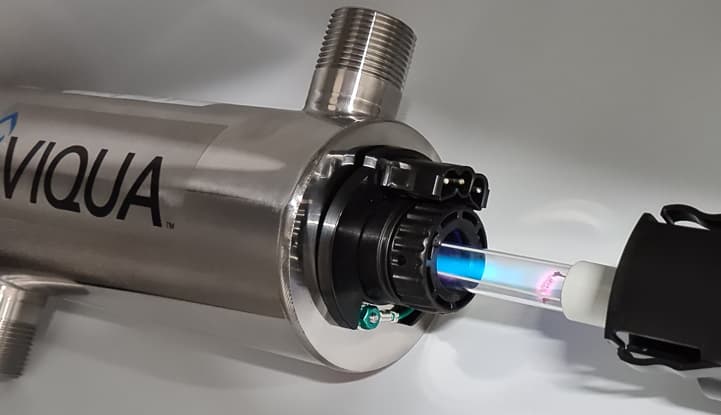
When Is a UV Water Lamp Needed?
A UV water lamp is an effective and eco-friendly way to disinfect water without chemicals. Here’s when you might need one — and how to choose the right model for your home or business.
Water entering homes or industrial facilities can sometimes contain microorganisms that pose health risks. UV water lamps offer a powerful solution for disinfection, as they destroy bacteria, viruses, and other pathogens. This guide explains when a UV lamp is necessary and how to select the right type for domestic or industrial use.
Using Well or Borehole Water
Groundwater is often contaminated by microorganisms from the surrounding environment — such as Escherichia coli, Giardia, or viruses. A UV lamp ensures their effective elimination.
Insufficient Protection from the Public Water Supply
While municipal water is generally treated, it can still contain residual microorganisms — especially in areas with aging pipelines or after network failures.
Chlorinated Water with Unpleasant Taste or Odor
UV lamps are an eco-friendly alternative to chlorination. They disinfect water without affecting taste or smell and do not produce chemical byproducts.
Industrial and Commercial Operations
In food processing, pharmaceuticals, and beverage production, sterile water is essential. UV lamps provide high-level disinfection without chemicals.
Protecting Vulnerable Individuals
Homes with infants, elderly residents, or people with weakened immune systems should consider UV lamps as an additional safety measure.
Water Flow Rate
The UV lamp must handle the maximum water flow through your system. This is calculated based on the simultaneous use of all water outlets.
For a home with one bathroom and kitchen: 10–20 liters per minute is usually sufficient.
For larger homes or small commercial sites: up to 50 liters per minute may be required.
Quality of Incoming Water
UV lamps are effective only when the water is clear. If the water contains iron, manganese, turbidity, or organic matter, install pre-filtration:
Mechanical filters (remove sand, silt, and solid particles)
Iron and manganese filters (if levels exceed recommended limits)
UV Lamp Power
Measured in millijoules per square centimeter (mJ/cm²), power determines UV light intensity.
Typical households: 30–40 mJ/cm²
Industrial operations: may require higher intensity
Installation Type
Homes: Compact UV lamps are typically installed on the main water line or under the kitchen sink.
Industrial sites: Large-capacity UV lamps are designed for continuous operation and higher flow rates.
Maintenance and Operating Costs
Regular upkeep is essential:
Replace the UV bulb annually.
Clean the quartz sleeve regularly to remove mineral deposits or cloudiness that can reduce lamp efficiency.
Eco-friendly: No chemicals or harmful byproducts.
Fast and effective: UV light destroys most microorganisms in seconds.
Easy to install and operate: Suitable for both households and large facilities.
Summary
UV water lamps are an ideal solution for ensuring clean, safe water in homes, businesses, and industries that require high-quality water. When choosing a lamp, consider your flow rate, water quality, and required power. With regular maintenance, a UV system will provide long-term protection and peace of mind.